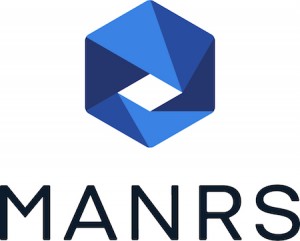The service refers to the interconnection between peers and GRNET network in layers 1 to 3, specifically to cases that deal with the physical interconnection to a GRNET gate of equipment, the configuration of logical connections (e.g. VLANs) and their IP numbering (v4/v6). Power Users can make use of additional interconnection services.
Service Users
The service is provided to GRNET peers, that their application for the provision of GRNET connectivity has been approved by the Board of Directors.
Supported Interconnection Technologies
For physical interconnections GRNET supports Ethernet connections exclusively. The speed/mean choices are:
- 10Mbps, with electric (RJ45) interconnection,
- 100Mbps, with electric (RJ45) or optical (multimode 850nm ή singlemode 1310/1550nm, LC connector) interconnection
- 1Gbps, with electric (RJ45) or optical (multimode 850nm ή singlemode 1310/1550nm, LC connector) interconnection
- 10Gbps, with optical (multimode 850nm ή singlemode 1310/1550nm, LC connector) interconnection
Acceptable use policy
- The interconnection networks are exclusively used for BGP routing deployment. The numbering of the peer’s servers or the use of NAT in these addresses is not allowed.
- The mac addresses allowed to be announced through logical connections are limited. In the case of VPNs deployment, the logical connections have to be implemented through the routers of the peer.
Points and Ways of Interconnection
For service provision, the peer needs to acquire a telecommunication circuit in order to connect with a GRNET point of presence. The peer can choose any type of service to reach a GRNET gate. The most common scenarios are:
- Interconnection with GRNET nodes co-located in OTE buildings. This is the most common case, where OTE can be the only circuit provider. For relatively low speeds (e.g. 2-50Mbps) the use of Metro Ethernet technology is suggested. For higher speeds long-term hiring of dark fibre is suggested.
- Interconnection with neutral providers in GRNET nodes: it’s the same case as above, but the circuit can be delivered by another alternative provider. At the moment only one such node is in function.
- Interconnection with a GRNET point of presence that is located in a GRNET peer. In this case, GRNET has its own optical fibre reaching the area of the peer where terminal equipment is established. Connections of a third peer with this equipment are allowed by GRNET, but the consent of the peer that hosts the equipment for the passing through of the third peer’s circuit, the possible equipment installation, the area access etc. is demanded. This allows the contrivance of more economical solutions in the case of peers vicinity, for example through alternative provider, proprietary fibre, wireless link, xDSL equipment etc. In any case, the circuit from GRNET’s equipment to the peer is under the exclusive responsibility and management of the peer.
The direct physical interconnection between a peer and GRNET is not necessary. A peer’s interconnection can be deployed as a logical connection through the physical connection of a third peer. Also every peer can hold multiple physical connections with GRNET, either to interconnect different annexes or for the increase of the service availability.
Mutually Agreed Norms for Routing Security (MANRS) is a global initiative, supported by the Internet Society, that attempts to reduce the most common routing threats.
GRNET has joined MANRS since July 2018, implementing the four required actions:
- Filtering – GRNET ensures the correctness of its own announcements and of the announcements from its customers to adjacent networks with prefix and AS-path granularity
- Anti-spoofing – GRNET enables source address validation for all customer networks, its own end-users, and infrastructure
- Coordination – GRNET maintain globally accessible up-to-date contact information for routing and IP space assignments,
- Global Validation – GRNET publishs routing and IP space data, so others can validate routing information on a global scale
Cost
GRNET does not charge the peer for the gate, the interconnection with the web, or for any other service. However, the cost of the telecommunication circuit between the peer and GRNET equipment is covered exclusively by the peer (the cost includes both ends of the circuit).
Logical interconnection
One or more logical interconnections (vlans) can be implemented in every physical connection. The logical interconnections can either end up to GRNET equipment (e.g for web access) or they can be delivered to other interconnection points of GRNET, thus offering VPN either inside the peer, or with other GRNET peers.
For logical interconnections that end up to GRNET equipment, appropriate interconnection networks (/30 for IPv4, /126 for IPv6) are provided. The interconnection networks are intended exclusively for BGP routing deployment between GRNET and its peers and not for NAT use.




